The ferry ride to Juneau and then on to Sitka was pretty dreary - cloudy, rainy weather, with little views of the beautiful mountains in this part of Alaska.
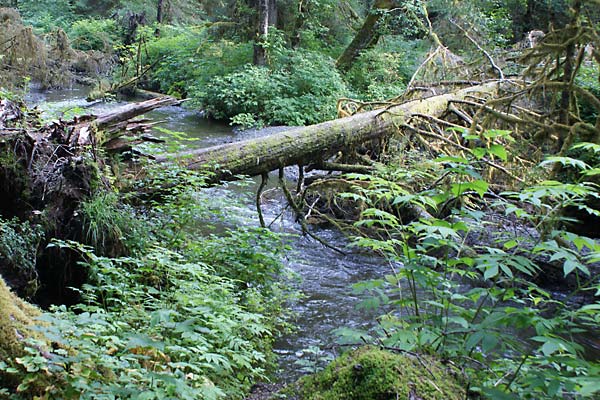
In Sitka we camped in the local national forest campground. This stream was right next to our campsite. The NFS describes the forests here as termperate rain forests. With all the moss, thick undergrowth, and decayed trees, it is easy to see why it is called a rain forest. We have been here for a week; it has rained some every day, and the weather has been rather constant - it is either raining, or threatening to rain. Our campsite did have some nice advantages - the blueberries were ripe and free for the picking.
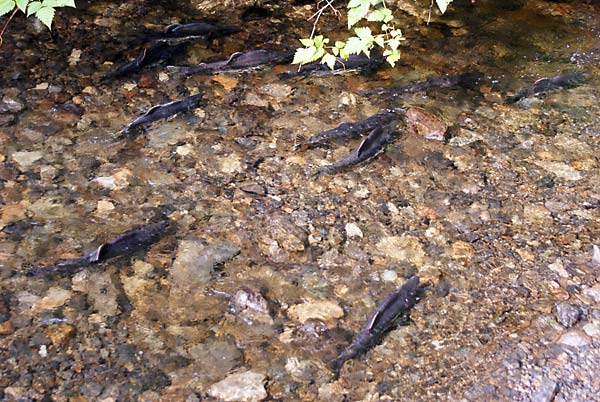
Another attraction was that the salmon were running, i.e. returning from the ocean to spawn. Salmon have an interesting life cycle. They hatch in fresh water streams and go to the ocean after about a year. After spending 2 -5 years in the ocean they return to the stream where they were hatched, spawn, and then die. The instinct to reproduce the species must indeed be very powerful. The salmon run attracts bears, since it is an easy source of food for them. The campground host had warned us of a sow and two cubs (brown bears) in the area. We didn't see the bears, but saw signs of their presence - partially eaten salmon on the trail next to the stream.
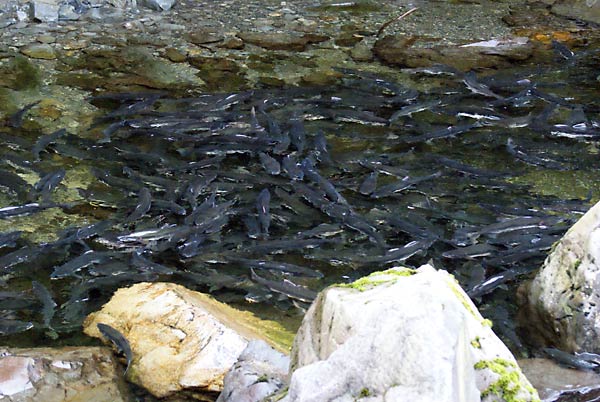
The Indian River runs through Sitka. This pool in the river is thick with salmon.
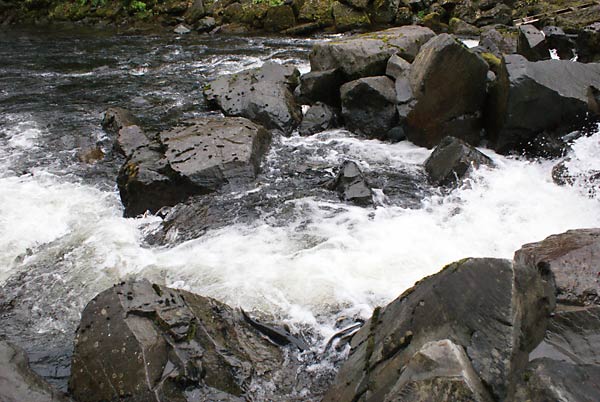
The pool in the picture above is just below these cascades. It was interesting to watch the salmon attempt to swim up the cascades. It was quite a struggle for them. We didn't see any make it, but we did see salmon above the cascades, so some of them were successful.
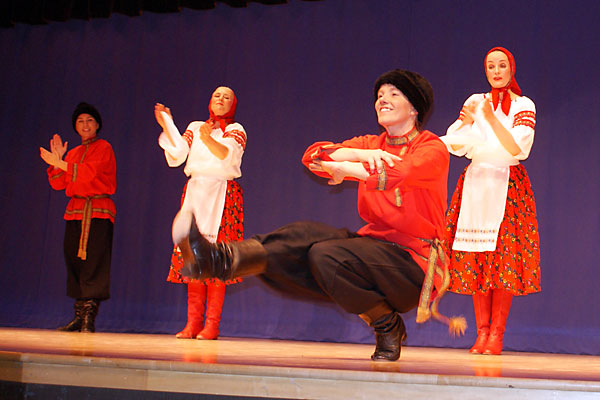
One of the attractions of Sitka is the New Archangels dance group. It is a group of women who perform Russian folk dances. Women dance the men's roles, as well as the women's roles.

Here they are doing a Russian gypsy folk dance. They were very good.

The Sheldon Jackson museum has an extensive collection of native Alaskan artifacts. Sheldon Jackson was a Presbyterian missionary, educator, and territorial government official in the late 19th and early 20th century. He collected native artifacts, which became the basis for this museum. Because of his collecting efforts, much information about the native culture was preserved, that might have otherwise been lost.
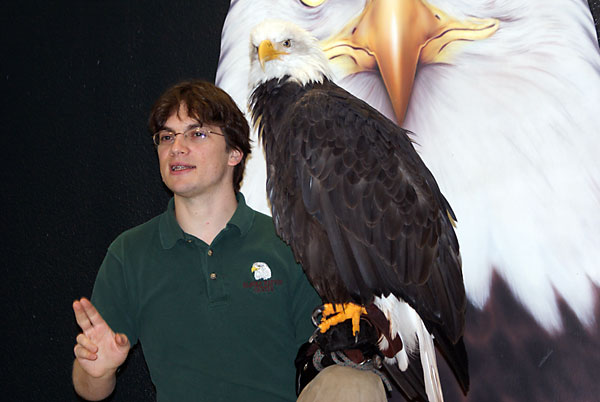
Sitka is also home to the Alaska Raptor Center, which is basically a hospital for birds of prey. This worker at the Center is showing Sitka, an eight year old bald eagle. Most of their patients are returned to the wild after they have recovered from their injury. A few, such as Sitka, have permanent injuries, and cannot be released to the wild, so they are permanent residents at the center and are used for educational programs.
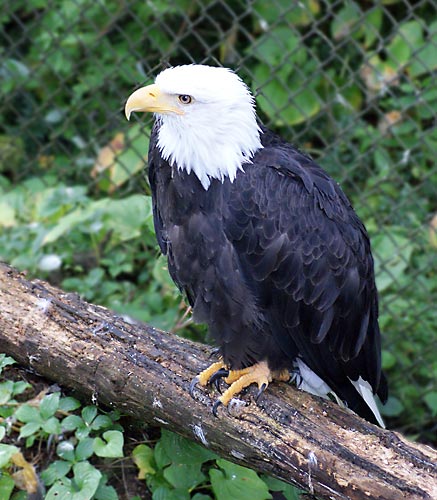
Another bald eagle that is a permanent resident of the Raptor Center.
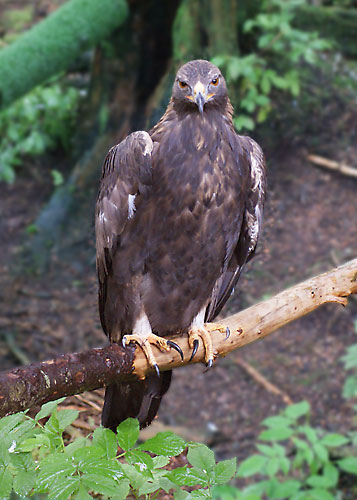
A golden eagle at the Center.
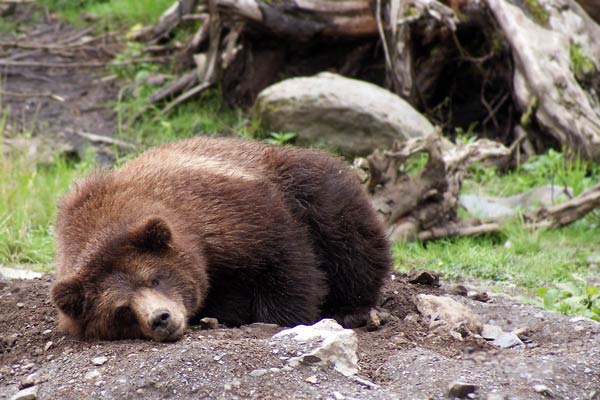
The Fortress of the Bear is a new addition to Sitka; it is a permanent home for bears that cannot be returned to the wild. This one-and-a-half year old cub, and his sibling, are the two bears at the center. The cubs were orphaned when their mother was killed attempting to break into a kitchen for food. The cubs were brought here since they were not mature enough to survive on their own in the wild. Also, they had learned to associate humans with food. In these circumstances, federal regulations required that the cubs either be killed or a permanent home for them in captivity be found. Consequently, they were brought here.
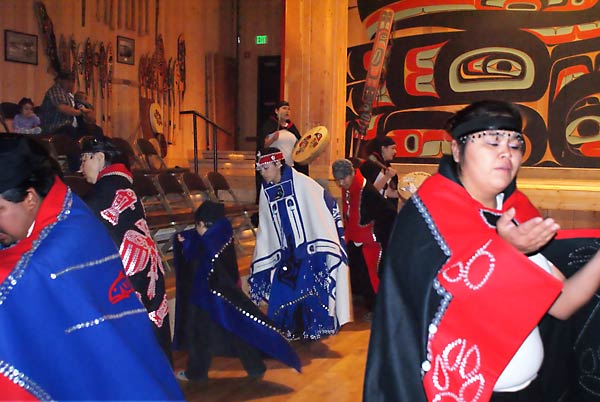
The Na Kahidi Dancers are a Tlingit dance group that performs in the tribal ceremonial hall. They did a number of Tlingit and Haidi (neighboring tribe to the south) dances. They were very good.
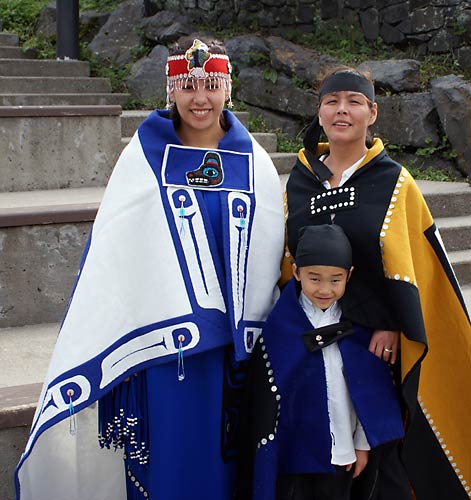
The dancers posed for photographs after the performance. The little boy was really into the dancing and did a great job; he was fun to watch.
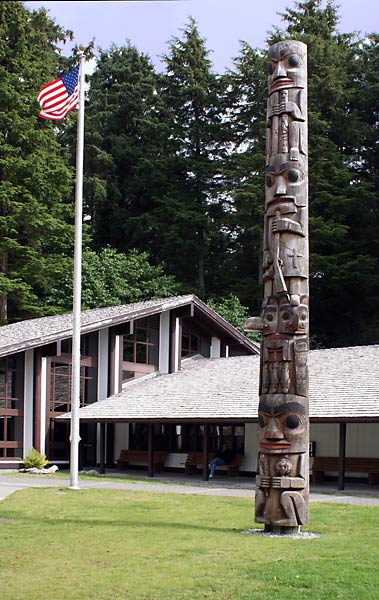

Sitka National Historical Park has a number of Tlingit and Haida totem poles. The one in the left picture is the bicentennial pole, done as part of our American bicentennial. It depicts 200 years of northwest coast history. The figure at the top symbolizes the northwest coast native American; the one below it represents the arrival of the white man, who brought guns, Christianity, and treaties (symbolized by the scroll in his right hand). Below the white man are the Raven and the Eagle, symbols of the two Tlingit moieties. At the bottom is the northwest coast Indian prior to the arrical of the white man. The top figure holds two staffs; the one on the right is richly carved, representing the rich cultural heritage of the past, the the one on the left is uncarved, representing the unknown future.
The right picture shows a totem pole marking the site of the Tlingit fort when the Russians regained control of Sitka in 1804 (The Tlingits had chased them out in 1802). The top figure is the Raven; below him are crestsof the Tlingit clans. At the bottom is the Raven helmet worn by a legendary Tlingit warrior that led the battle against the Russians.

This Russian iron plate is on display in the Russian Bishop's house, which is also part of Sitka National Historical Park. We were told that the Russians buried twenty of these plates from the Bering Sea coast of Alaska to California. The translation of the inscription is "This land belongs to Russia". Of the twenty plates, this is the only one that has been recovered.
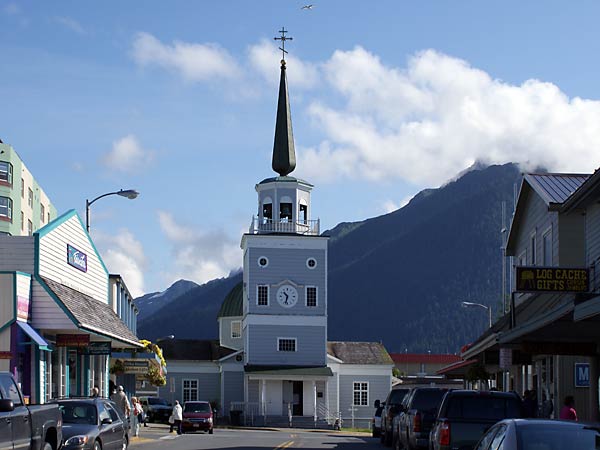
The Russian Orthodox Church has a dominant position in the center of the city. We met a women who had brought her aging mother to visit Sitka and go to the church during Easter; her mother is Tlingit, a native of Sitka, and a Russian Orthodox member. The woman told us that the Easter service started at 11 p.m. and went until 4 a.m., and the congregation stands throughout the entire service. Now, that is dedication to one's religion.
Note the blue sky; on our last day here we awoke to a blue sky with little cloudiness. Amazing! But, by mid-afternoon it was cloudy with threatening rain clouds developing. The weather was back to normal.

It is time to leave Sitka; we will catch the 4:30 a.m. ferry to Wrangell.